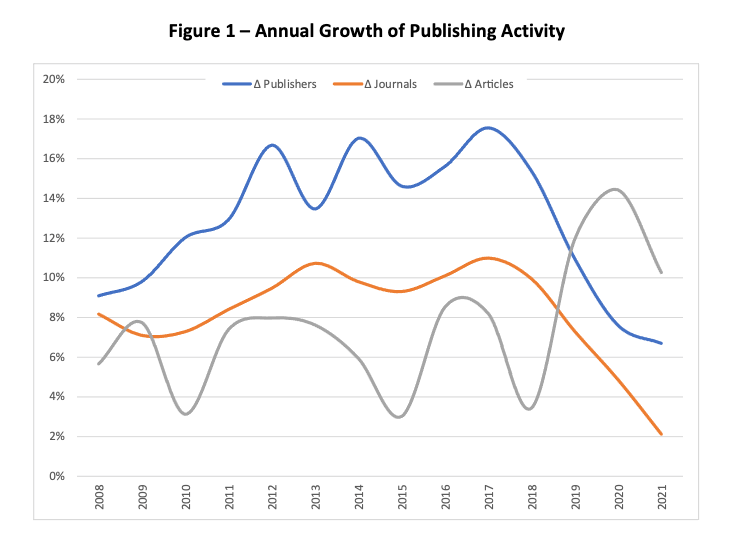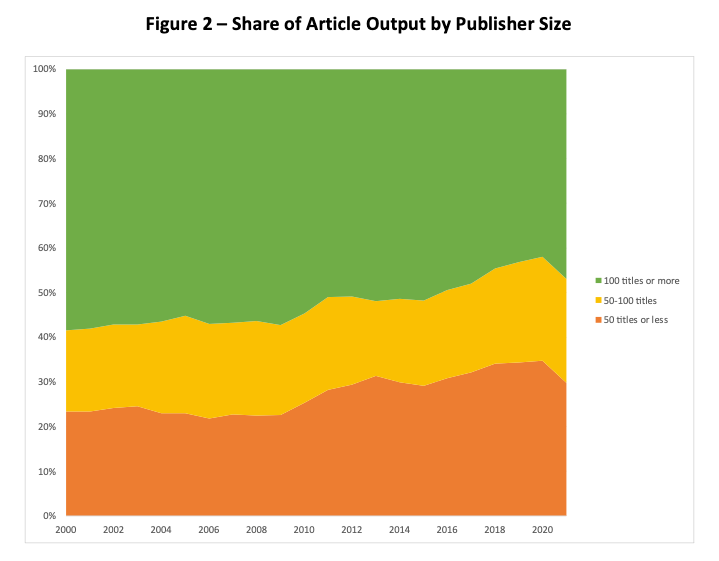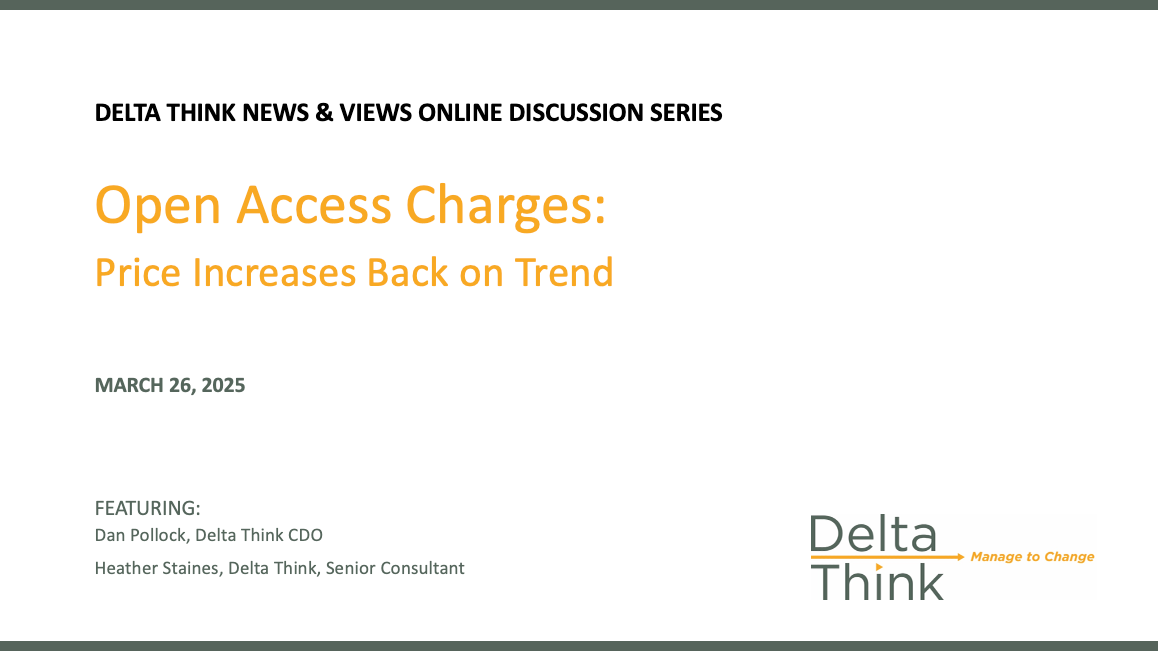News & Views: Publishers and Market Consolidation – Part 2 of 2

This month we present the second part of some results of big data analysis of the scholarly publishing industry. We look at the latest data sources to tease out information about numbers of publishers and changing patterns in consolidation of the industry.
Background
At the start of 2022, the Open Alex data set was launched. It combines data from multiple sources, including the (now unsupported) Microsoft Academic Graph, Crossref, Unpaywall, the DOAJ, ORCID, and PubMed. It weighs in at over 1.6 terabytes, with several hundred million records covering papers, authors, institutions, and more. Analyzing it requires big data tools and techniques.
Delta Think is now using it1 to analyse the entire scholarly landscape. We utilize it to look at patterns across all journal access types, and it will inform our 2022 OA market sizing process. By way of illustration, we thought we’d look at what it can tell us about the basic structure of the scholarly publishing industry.
Consolidation and activity
Last month we examined the large degree of consolidation in journals publishing. We saw that 95% of publishers publish 10 journals or fewer, but account for barely one fifth of articles published. Meanwhile, half of total scholarly output is published by just 10 publishers, those with the largest numbers of journals.
We can further analyze the market’s consolidation by comparing annual growth rates in the numbers of publishers, journals and articles, as shown below.

Sources: OpenAlex, Delta Think analysis. © 2022 Delta Think Inc. All rights reserved.
The chart above shows the change in numbers compared with the previous year. The undulations in the lines are not uncommon when looking at annual changes. Activity does not always fall cleanly within calendar years. Changes on an annualized chart can therefore appear in fits and starts. However, by looking at the trends, some clear patterns emerge.
- The numbers of publishers (in blue) grew more quickly in the mid-teens than before or since. This is consistent with the S-shaped curve in the numbers of publishers we noted last month. So it seems the market showed signs of fragmentation in the mid-teens, followed by consolidation more recently.
- Growth in numbers of journals (in orange) accelerated until about 2017, then started to fall off. This happened in tandem with the slowing growth in the numbers of publishers.
- The rate of growth in numbers of articles (in grey) seems to run counter to the trends above. On average it was flat (at around 5%-6%) until 2018/2019, but then it accelerated. We think much this is because of the unusually high levels of submission in the wake of COVID (as we discussed in our market sizing analysis last year).
Even allowing for the outlying effects of COVID – and a subsequent falling back towards trend – it seems that publication output is accelerating, while the growth in the publication venues is slowing and the market consolidates.
Changes over time
The market has evolved over time, as we explore below.

Sources: OpenAlex, Delta Think analysis. © 2022 Delta Think Inc. All rights reserved.
The chart above shows how the total numbers of articles published each year were shared between publishers of various sizes.
- Publishers producing 50 titles or less2 (shown in orange) have increased their share of output over time. By 2020, they are collectively taking almost 1.5x their share compared to 2000.
- The share for mid-sized publishers (50-100 titles, in yellow) has remained almost static, with only a mild increase.
- The share of the largest publishers (in green) has decreased by around one quarter from 2000 to 2020.
- The figures for 2021 are slightly off trend. We explore this more below.
Conclusion
Last month we noted that, while the consolidation in our market is probably not surprising, the scale of it might be. This month we see that the market has become less consolidated over time.
Smaller publishers now publish a significantly greater share of output than they did 20 years ago. The largest publishers appear to have less share. So, extreme though the consolidation may appear to some, it’s not as great as once it was.
The exception to this appears to be 2021. The last full year’s data run counter to the long-term trend. The largest publishers have increased their share in 2021, although they still have less share than 20 years ago.
This could be due to lagging data; even 6 months into the current year, we may not yet have a fully mature reading on the last full year. It could also be due to COVID. Perhaps larger organizations are simply better equipped to scale up to meet the resulting increases in demand, as they are used to operating at scale already. The rise of mixed model publishing deals (Transformative Deals) may be a factor, but it is likely too soon to tell. (We will explore this in a future analysis.)
The data also suggest that growth in publisher and journal numbers has slowed, while growth in output has accelerated. Over the last few years – irrespective of Covid effects – it seems the larger publishers are producing larger journals, and the smaller publishers smaller ones. Larger organizations may be able to produce things more efficiently than smaller ones. Meanwhile, the rise of Open Access and reduction in reliance on print works removes constraints on publication sizes.
The large volume of activity amongst smaller publishers does more than just drive growth in the overall market. It also provides potential acquisition targets for larger publishers wishing to expand their activities. Only time will tell, of course, but we wonder if consolidation will pick up again and the reversal of patterns last year is the beginning of a new trend.
1 Methodological notes. The data basically cover “anything with a DOI”. We process the underlying OpenAlex data to group to collated common variations in publisher names. We include only research articles. We exclude repositories and data with no stated publisher or year.
Reference: OpenAlex: A fully-open index of scholarly works, authors, venues, institutions, and concepts. Jason Priem, Heather Piwowar, Richard Orr. Jun 2022. https://doi.org/10.48550/arXiv.2205.01833
2 Pedantry Corner: “Fewer”, surely? Maybe not! We are measuring output, not counting things: “fewer choices” but “less output”. Besides, the rule about “fewer” is the opinion of a poorly educated, anonymous 18th Century critic.
This article is © 2022 Delta Think, Inc. It is published under a Creative Commons Attribution-NonCommercial 4.0 International License. Please do get in touch if you want to use it in other contexts – we’re usually pretty accommodating.













